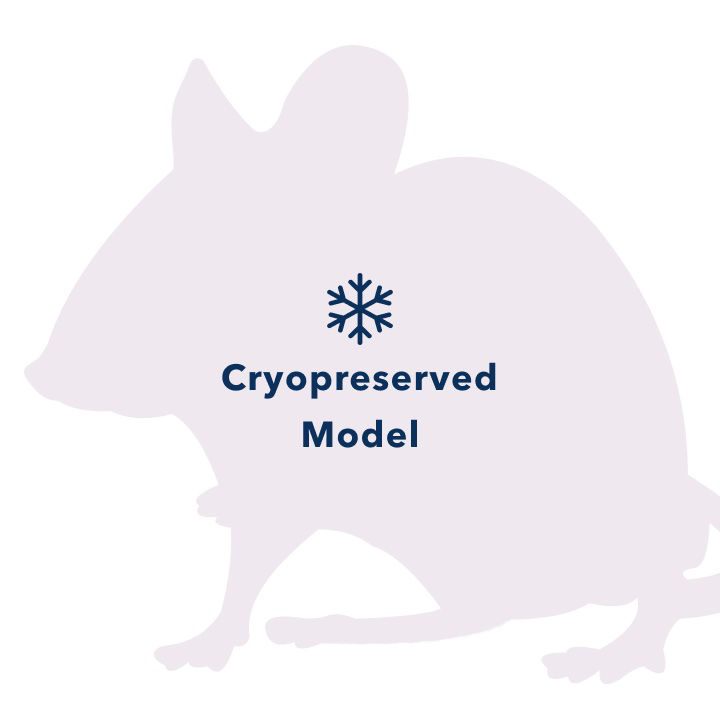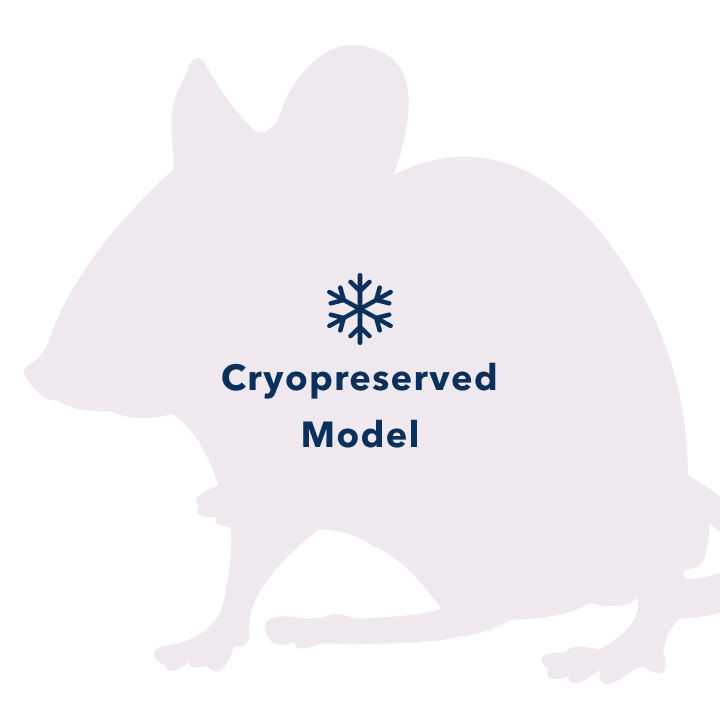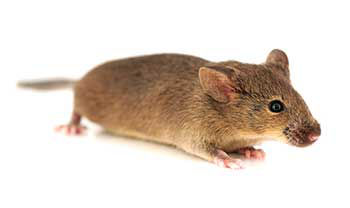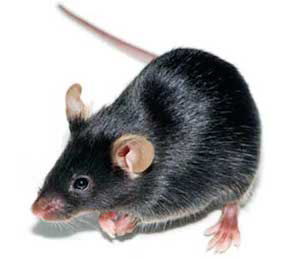Application Areas:
HLA-B44 (CB6F1)

| Model No. | Nomenclature | Genotype |
|---|---|---|
| 9664-F | CB6F1-Tg(HLA-B*4002/H2-Kb)B44.01/Tac | tg/wt |
| 9664-M | CB6F1-Tg(HLA-B*4002/H2-Kb)B44.01/Tac | tg/wt |
- Description
- Related Products & Services
- Price & Licensing
- Health Report
- Overview
- Genetics
- Guides & Publications
- Applications & Therapeutic Areas
- Transit, Housing & Welfare
- Diet
Overview
Nomenclature: CB6F1-Tg(HLA-B*4002/H2-Kb)B44.01/Tac
- Carries a transgene consisting of fragments of the human HLA-B*4002 gene and mouse H2-Kb gene which encodes a chimeric class I molecule consisting of the human HLA-B44 leader, α1 and α2 domains ligated to the murine α3, transmembrane and cytoplasmic H2-Kb domains
- Expresses the chimeric HLA-B44 class I molecule on the surface of T and B cells.
- Represents the human HLA-B44 supertype. The B*40:02 allele is a member of the B44-binding supertype, which encompasses a group of HLA B alleles sharing a binding specificity for peptides with E in position 2 and aliphatic/hydrophobic residues at the C-terminus. B61 is a serological designation. The B61 serological antigen is present on several B*40 subtypes (including B*40:02). With one possible exception, all alleles with the B61 serological antigen are expected to share the same main binding specificity as B*40:02, and hence have been defined as members of the B44 binding supertype.
- Useful for infectious disease research, vaccine development and testing, safety and immunogenicity testing as well as research directed towards oncology and autoimmune disorders
- Permits identification of epitopes restricted to the HLA-B44 supertype
- Taconic offers this allele on two different backgrounds, CB6F1 and C57BL/6. Model #9659 is on a CB6F1 background and is recommended for most applications, including vaccine research and general epitope identification. The HLA-B44 (C57BL/6), model 8911, is recommended specifically for syngeneic tumor studies utilizing C57BL/6-derived tumors and for crossbreeding to other GEM lines on the C57BL/6 background (inquire regarding crossbreeding rights).
Recommended Controls
The recommended control for this model is CB6F1 mice.
Origin
Genetics
Guides & Publications
Initial Publication: Depla E, Van der Aa A, Livingston BD, Crimi C, Allosery K, De Brabandere V, Krakover J, Murthy S, Huang M, Power S, Babé L, Dahlberg C, McKinney D, Sette A, Southwood S, Philip R, Newman MJ, Meheus L. (2008) Rational design of a multiepitope vaccine encoding T-lymphocyte epitopes for treatment of chronic hepatitis B virus infections. J Virol 82(1):435-50.
This publication does not describe the HLA-B44 strain, but the HLA-B44 strain was generated in a similar manner to that of the other transgenic HLA mouse strains described in the publication and may be used for similar types of experiments.
Applications & Therapeutic Areas
- Autoimmune Disease
- Immunology
- Infectious Disease
- Oncology & Immuno-Oncology
- Safety Assessment
- Vaccine Research
- Inflammation
Transit, Housing & Welfare
Need more info? Click the live chat button or Contact Us
Packing Practices
Taconic standard practice is to recombine animals of different home cages and/or ages from a single model and sex during packing, except in specific cases where Taconic's animal welfare policy prohibits recombination due to aggression or other concerns. When an order is fulfilled with animals from more than one week of birth, this standard practice results in animals from a range of birth weeks packed together in a single TTC. When an order is fulfilled with animals from genotyped models, this standard practice results in animals from different home cages packed together in a single TTC.
Customers who wish to keep animals from different weeks of birth separated should place orders with the special instruction "Divide and label by age." Note that this special request can result in increased costs for additional Taconic Transit Cages, dividers and/or freight charges.
Taconic discourages other types of custom packing requests as they can have a negative impact on animal welfare. Learn more.
Diet
- Services
- Licensing
- Pricing - USD
- Pricing - EUR
- Pricing - DKK
- Pricing - USD Nonprofit
- Pricing - EUR Nonprofit
- Pricing - DKK Nonprofit
- Select my Health Standard
- Get Custom Pricing Guide
HLA-B44 (CB6F1)
Conditions of Use for Taconic Transgenic Models™
Taconic Transgenic Models™ (Models) are produced and distributed under rights to patents and intellectual property licensed from various institutions. Taconic sells the Models to purchasers, grants to each purchaser a right under Taconic's rights in such licensed patents and intellectual property to use the purchased Model in consideration of purchasers' acknowledgement of and agreement to the Terms and Conditions for Taconic Models, Products and Services and the following terms of use:
- Title to these Models and biological materials derived from them remains with Taconic.
- The Models will be used for research purposes only.
- The Models will not be bred or cross-bred except to obtain embryos or fetuses required for research purposes unless additional rights have been granted in writing by Taconic.
- The Models and biological materials derived from them will not be distributed to third parties or used for commercial purposes.
- Non-profit purchasers may not use this Model and/or biological materials derived from it in sponsored research or contract research studies unless it is purchased at the for-profit price.
Pricing - USD
Murine Pathogen Free (MPF) Health Standard
9664 Female
9664-F Genotype tg/wt
Cohorts are reserved upon order placement and will take 2-4 weeks to fulfill. An estimated lead time will be provided to you within 2-3 business days.
| Age in Weeks | Quantity 1 - 999 |
|---|---|
| 3 to 10 | US$449.00 |
9664 Male
9664-M Genotype tg/wt
Cohorts are reserved upon order placement and will take 2-4 weeks to fulfill. An estimated lead time will be provided to you within 2-3 business days.
| Age in Weeks | Quantity 1 - 999 |
|---|---|
| 3 to 10 | US$449.00 |
Pricing - EUR
Murine Pathogen Free (MPF) Health Standard
9664 Female
9664-F Genotype tg/wt
Cohorts are reserved upon order placement and will take 2-4 weeks to fulfill. An estimated lead time will be provided to you within 2-3 business days.
| Age in Weeks | Quantity 1 - 999 |
|---|---|
| 3 to 10 | 409,00 € |
9664 Male
9664-M Genotype tg/wt
Cohorts are reserved upon order placement and will take 2-4 weeks to fulfill. An estimated lead time will be provided to you within 2-3 business days.
| Age in Weeks | Quantity 1 - 999 |
|---|---|
| 3 to 10 | 409,00 € |
Pricing - DKK
Murine Pathogen Free (MPF) Health Standard
9664 Female
9664-F Genotype tg/wt
Cohorts are reserved upon order placement and will take 2-4 weeks to fulfill. An estimated lead time will be provided to you within 2-3 business days.
| Age in Weeks | Quantity 1 - 999 |
|---|---|
| 3 to 10 | kr.3.040,00 |
9664 Male
9664-M Genotype tg/wt
Cohorts are reserved upon order placement and will take 2-4 weeks to fulfill. An estimated lead time will be provided to you within 2-3 business days.
| Age in Weeks | Quantity 1 - 999 |
|---|---|
| 3 to 10 | kr.3.040,00 |
Pricing - USD Nonprofit
Murine Pathogen Free (MPF) Health Standard
9664 Female
9664-F Genotype tg/wt
Cohorts are reserved upon order placement and will take 2-4 weeks to fulfill. An estimated lead time will be provided to you within 2-3 business days.
| Age in Weeks | Quantity 1 - 999 |
|---|---|
| 3 to 10 | US$264.00 |
9664 Male
9664-M Genotype tg/wt
Cohorts are reserved upon order placement and will take 2-4 weeks to fulfill. An estimated lead time will be provided to you within 2-3 business days.
| Age in Weeks | Quantity 1 - 999 |
|---|---|
| 3 to 10 | US$264.00 |
Pricing - EUR Nonprofit
Murine Pathogen Free (MPF) Health Standard
9664 Female
9664-F Genotype tg/wt
Cohorts are reserved upon order placement and will take 2-4 weeks to fulfill. An estimated lead time will be provided to you within 2-3 business days.
| Age in Weeks | Quantity 1 - 999 |
|---|---|
| 3 to 10 | 241,00 € |
9664 Male
9664-M Genotype tg/wt
Cohorts are reserved upon order placement and will take 2-4 weeks to fulfill. An estimated lead time will be provided to you within 2-3 business days.
| Age in Weeks | Quantity 1 - 999 |
|---|---|
| 3 to 10 | 241,00 € |
Pricing - DKK Nonprofit
Murine Pathogen Free (MPF) Health Standard
9664 Female
9664-F Genotype tg/wt
Cohorts are reserved upon order placement and will take 2-4 weeks to fulfill. An estimated lead time will be provided to you within 2-3 business days.
| Age in Weeks | Quantity 1 - 999 |
|---|---|
| 3 to 10 | kr.1.791,00 |
9664 Male
9664-M Genotype tg/wt
Cohorts are reserved upon order placement and will take 2-4 weeks to fulfill. An estimated lead time will be provided to you within 2-3 business days.
| Age in Weeks | Quantity 1 - 999 |
|---|---|
| 3 to 10 | kr.1.791,00 |
Select my Health Standard
Need help choosing the right Taconic Biosciences health standard for your research?
Use the Health Standard Selector to enter your exclusion list. The tool will tell you which health standards meet your requirements.
Get custom pricing guide
Schedule A Scientific Consultation
Connect directly with a member of our Scientific Solutions team who can help you select the most appropriate model and maximize your experimental success.
















.jpg)

.jpg)
.jpg)
.jpg)
.jpg)





.jpg)


.jpg)
.jpg)




.jpg)




.jpg)

.jpg)


















